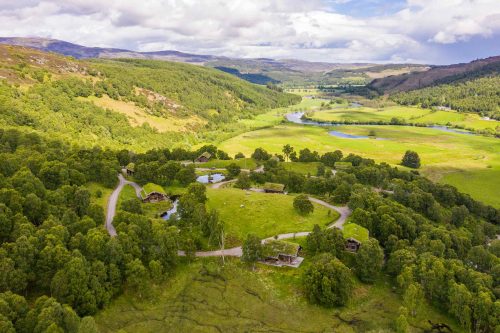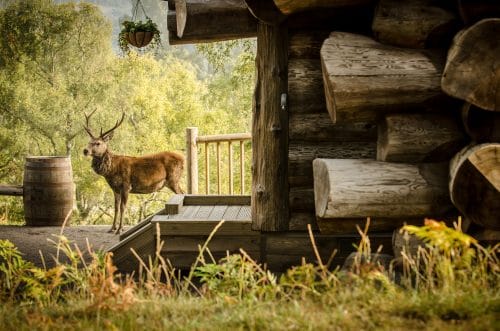Facts about ospreys in Scotland
The osprey is a stunning bird to watch in flight and when hunting. It is a very skilled hunter and unique amongst the hawk family. It has a different bone structure to other birds of prey and feet that are more like an owl’s. Its hooked beak is made for tearing what it has caught for dinner. It is the epitome of a bird of prey in our opinion.
Hunted to extinction in the UK, these graceful hunters returned from Scandinavia to breed at Loch Garten in 1954. But they needed some serious protection from human thieves and interference. Now there are just over 250 breeding pairs resident in Scotland making the population approximately 1500. Compare that to 510 breeding pairs of the golden eagle and, you can see, the osprey population is still dangerously low.
The best place to see them near us is at the river Glass in front of Eagle Brae. Also, at the junction of the river Farrar and river Glass in Struy. Guests who like to canoe quite often report sightings around Aigas Gorge between April and August.
What does an osprey look like
It is large with a white head and a distinctive brown eyestripe. It has a white underbelly and a brown back. They have a third eyelid like many birds of prey and when they reach adulthood their orange eyes turn yellow. In flight, they are often mistaken for a very large gull. A male’s wingspan, when fully grown is around 5 feet. But a female is larger and their wingspan can be up to 6 and a half feet. They are very vocal for a bird of prey. They often cheep or chirp which can become much faster when they, or their young, are threatened.
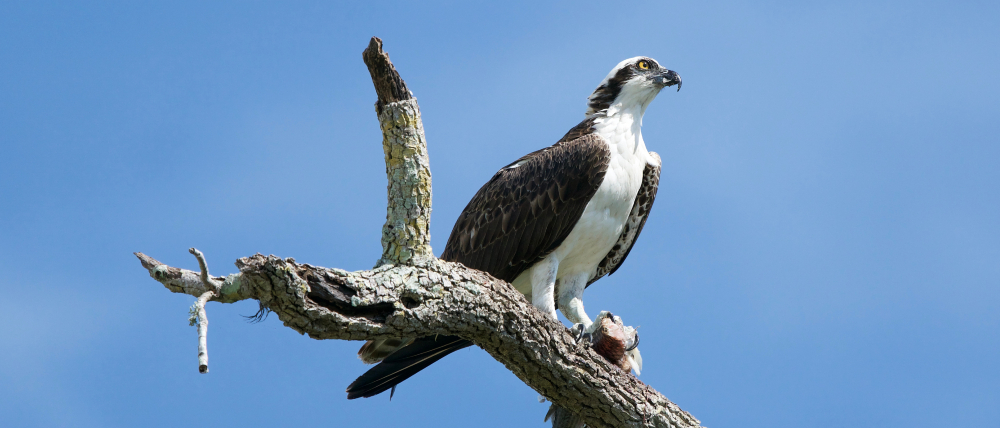
What do ospreys eat
The opsrey is a very specialised hunter of fish. And, its not fussy about the species it will eat. It will hunt for fish that swim in the top layer of large bodies of water. Using its very sharp eyesight, it will hover 90 meters above, watching for tasty morsels. Once it spots its prey, it will catch it in one of two ways. Either an impressive, high-speed dive, into the water or, an elegant swoop to pluck the fish out of the water. Once it has its dinner in its talons, it will head off for somewhere secluded on land to enjoy.
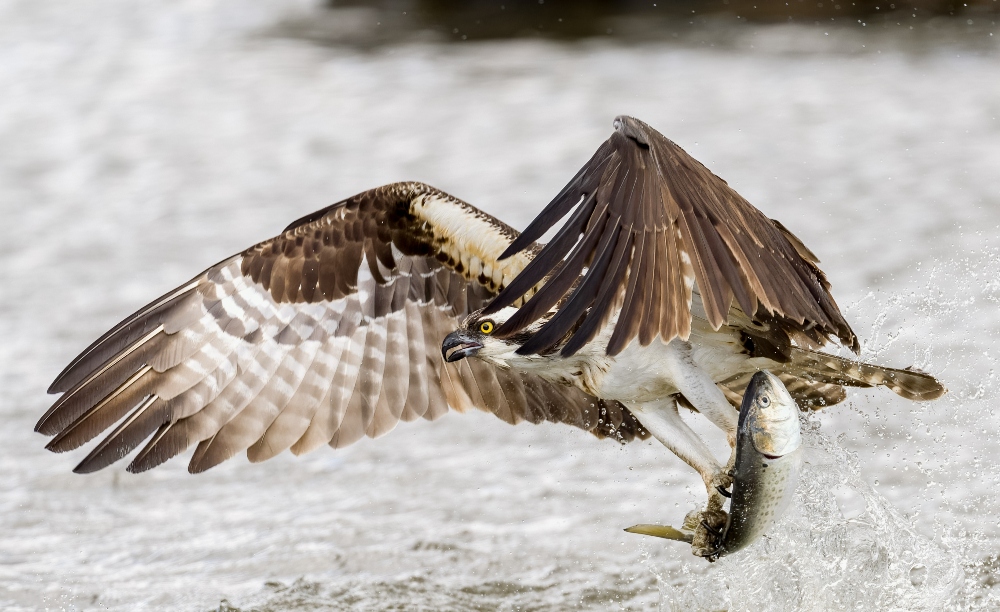
Ospreys nesting
Ospreys will lay two to three eggs and like to nest high up, in secluded areas. So seeing a nest is very unlikely. Not a bad thing! However, if you would like to see ospreys nesting, there is a famous osprey nest at Loch Garten in the Abernethy National Nature Reserve. You can watch the nest via live nest cam. Loch Garten is a great day out for birdwatchers and wildlife lovers alike. It’s just over an hour in the car from Eagle Brae.
The nature reserve encompasses moorlands, wetlands, and mountains, as well as the largest remnants of a Caledonian pinewood. Trails and walks wind their way through the nature reserve offering opportunities to see a whole host of wildlife as well as ospreys and other birds in flight.
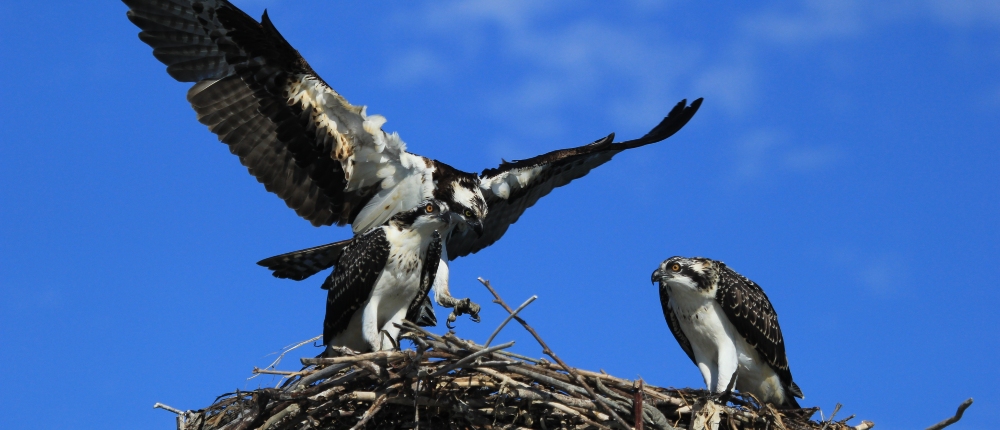
5 fabulous facts about ospreys
1. Females are normally 20% bigger than males
2. The osprey is capable of an impressive 125 kilometers per hour when diving for fish
3. It is believed that ospreys use ancestral nests. Some dating back hundreds of years
4. Ospreys migrate to West Africa for the winter – that’s 5,000 kilometers!
5. Male ospreys are eager to please their mate. Sometimes they bring too many sticks to the nest so the female is almost buried
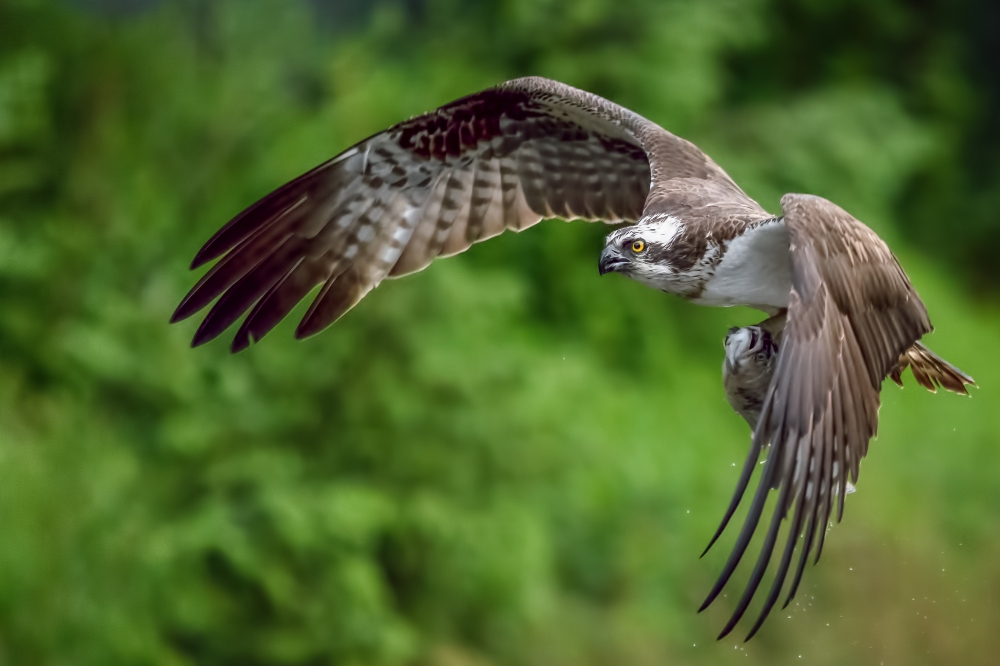
Eagle Brae is the perfect place to stay for any wildlife or bird lover. The walks around Struy offer the chance to experience inspirational landscapes and make some incredible memories. There are a huge amount of activities for you to do when you come to visit us.








